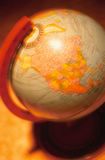Indonesia's economic recovery 2 comments

(P.S: Sorry for any disturbances the advertisements above may have caused you)
Since the 1997 Asian financial crisis where Indonesia emerged as one of the biggest losers in thw aftermath, its economy has been languishing in the doldrums as a series of mediocre presidents have tried, mostly in vain, to restore it to its former glory days in the 1980s and early 1990s when she was the fulcrum about which ASEAN operated. It seems likely that the process is now steadily underway with a new well-respected President holding a strong mandate and with the winds of political and economic investment in its sails.
Of course, much of the economic momentum is due to the upsurge in the global economy since late 2003. Indonesia has clearly benefited from the increase in world trade, since much of the world's shipping traffic (and most of Asia's imported oil) passes through the Straits of Malacca. Feeder shippers that operate within the region, such as Samudera Shipping, have seen massive growth in volume in addition to margins. Operators of Indonesian ports, such as Portek, have also seen strong growth in terminal handling operations over the past year.
Much of my optimism is due to recent political events where it is clear that both the US and China are jostling for influence in what they now recognise as a strategic region: Southeast Asia. China sees a need to secure its oil route, and also sees potential in oil exploration in the ASEAN region (check out CNOOC's aggressive bidding for Unocal, which holds many oil assets in Southeast Asia). The US strategically will look to counter-balance China and also sees a (security) need to cultivate good relations with the key Muslim countries in the region, chief among them Indonesia. Indonesia is already taking advantage of such an evolving political landscape. It is opening up new PSCs(Production Sharing Contracts), allowing foreign investment in oil exploration. And their President agreed to preferential trade agreements with both the US and China earlier this year. New foreign investment is set to flow in in the coming years.
One might also see Japan as a future source of foreign investment. In particular, Japanese automotive companies like Nissan and Toyota are looking increasingly to South-east Asia for car assembly and parts production. Indonesia has a low-cost base and must be seen as a key beneficiary of such outsourcing by the Japanese. In addition, their large population is a strong plus since the Japanese will view it as a strong potential customer base to sell the production models directly to. Just look at how Jardine Cycle and Carriage has been growing its vehicle sales volume (through Astra) over the last 2-3 years. This is also an indication that consumer demand in Indonesia is alive and well (and many Chinese businessmen have started to return after fleeing during the 1997 racial riots).
The Jakarta stock market has symbolised the growing market confidence in the future of Indonesia's domestic economy. Its composite index is probably one of the best-performing over the last two years, jumping from about 700 points in Jan 2004 to above 1100 points as of today, a jump of more than 50%. It looks poised to grow further provided that no major force majeure or human-inflicted disasters occur in the next few years.

2 Comments:
wonder should we buy into jardine c&c
Think it's a good and safe stock if you want to diversify, or if you want to play on Indonesia domestic recovery. However, it may not move fast and the opportunity costs of investing now in this bull market are very high.
Post a Comment
<< Home